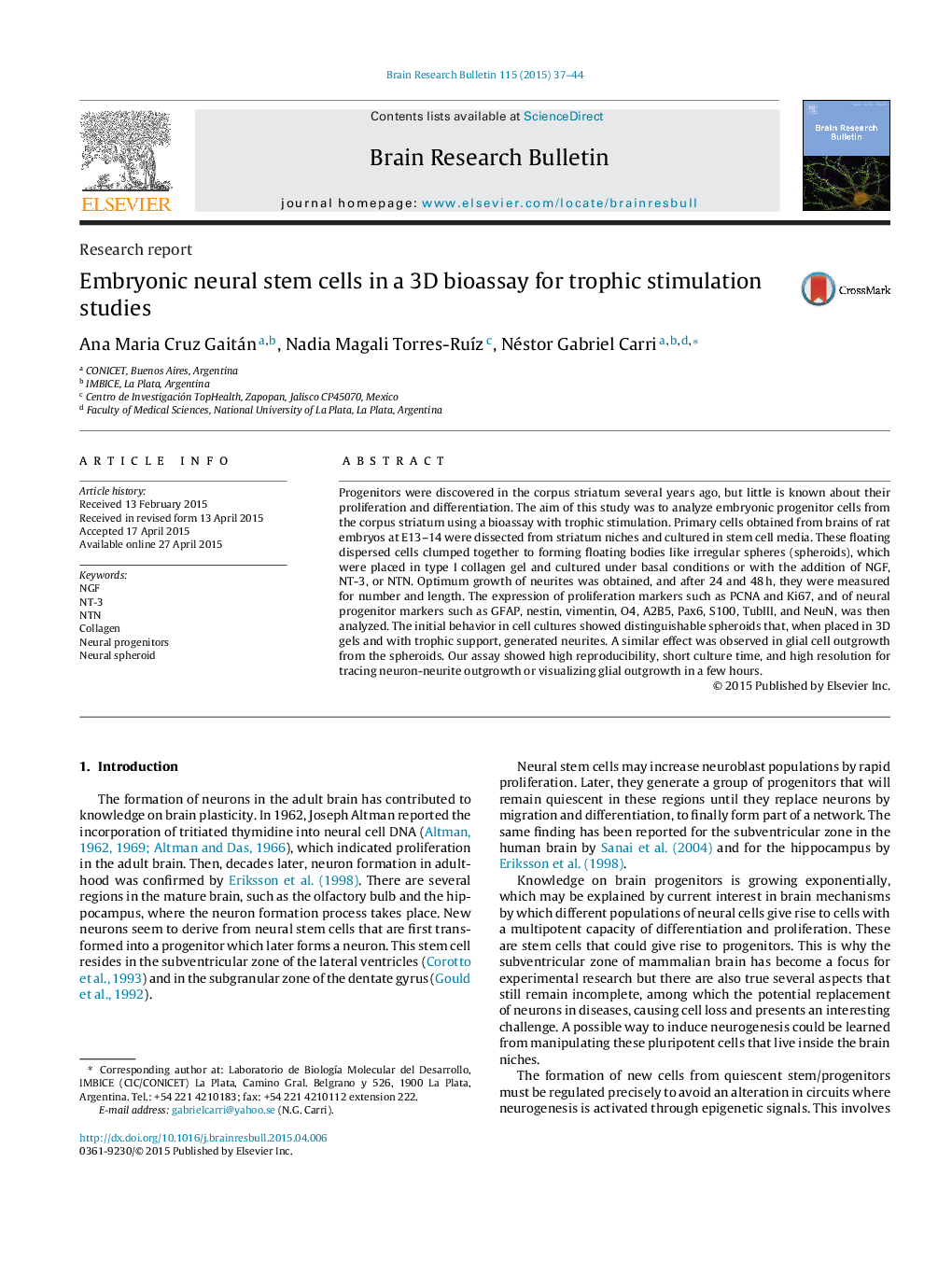| Article ID | Journal | Published Year | Pages | File Type |
|---|---|---|---|---|
| 4318693 | Brain Research Bulletin | 2015 | 8 Pages |
•3D assay was an excellent model for neurotrophins characterization on CNS neurons.•NT-3, NTN, and NGF stimulated outgrowth and neural differentiation of spheroids.•NT-3 exerts the best effect on neuritogenesis.•3D culture is an excellent way to study differentiation of neural stem cells.
Progenitors were discovered in the corpus striatum several years ago, but little is known about their proliferation and differentiation. The aim of this study was to analyze embryonic progenitor cells from the corpus striatum using a bioassay with trophic stimulation. Primary cells obtained from brains of rat embryos at E13–14 were dissected from striatum niches and cultured in stem cell media. These floating dispersed cells clumped together to forming floating bodies like irregular spheres (spheroids), which were placed in type I collagen gel and cultured under basal conditions or with the addition of NGF, NT-3, or NTN. Optimum growth of neurites was obtained, and after 24 and 48 h, they were measured for number and length. The expression of proliferation markers such as PCNA and Ki67, and of neural progenitor markers such as GFAP, nestin, vimentin, O4, A2B5, Pax6, S100, TubIII, and NeuN, was then analyzed. The initial behavior in cell cultures showed distinguishable spheroids that, when placed in 3D gels and with trophic support, generated neurites. A similar effect was observed in glial cell outgrowth from the spheroids. Our assay showed high reproducibility, short culture time, and high resolution for tracing neuron-neurite outgrowth or visualizing glial outgrowth in a few hours.
